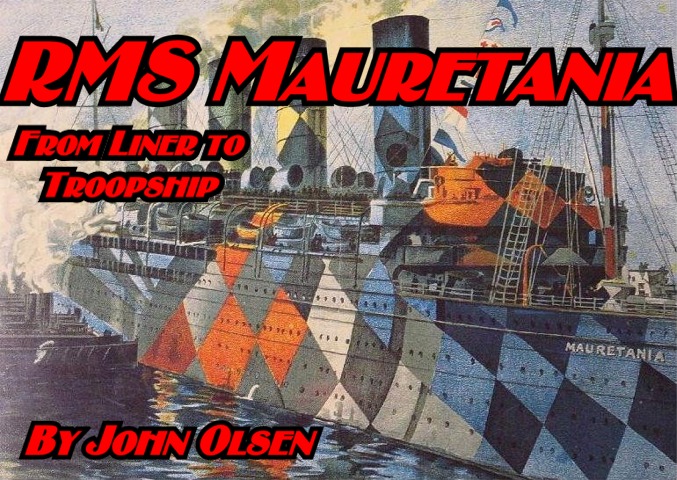 |
 |
Coinciding with the naval race between Britain and Germany that led to World War I was the fierce competition between these two nations over possession of the largest, fastest and most luxurious passenger ships for the lucrative trans-Atlantic runs between Europe and the United States. Beginning in the 1890’s, this competition reached a new level of intensity with the launching of the two 32,000-ton liners Mauretania and Lusitania for the Cunard Line in 1906. Construction of such expensive monsters as these was fast becoming so cost-prohibitive that major shipping lines were increasingly forced to rely on government subsidies, in return for which the vessels so funded were consigned to carry the national mail in peacetime and be available for government service as armed merchant cruisers in time of war.
When World War I finally arrived, however, these large ships proved too vulnerable for cruisers and were instead employed in the more suitable roles of hospital ships and troopships. Initially retaining their commercial liveries, the British liners were either progressively "darkened" against the submarine threat as the war progressed by painting out their funnel colors in gray or black and their hulls in gray of uniform or graded tones, or were given the universally mandated white hulls with red crosses and green bands of hospital ships. Beginning in 1916, however, British ships in increasing numbers began sporting an astonishing variety of brilliant colors in abstract patterns following the theory promoted by the artist Norman Wilkinson, supervisor of the Royal Navy’s new "Dazzle Section", that the proper application of distinctive colors and patterns would protect a ship from submarine attack by obscuring her silhouette, course and speed.
Wilkinson’s theory, though debatable in practice, resulted in the widespread application of dazzle camouflage throughout the British merchant fleet and even on a number of warships between 1917-1918. Unfortunately, the black and white photographs from this period show these patterns only in gray tones whose true color resolution is difficult to determine even for the most skilled photo interpreters. Color source material is limited to contemporary paintings and artwork, which are always open to artistic license and may be deceiving, and the actual pattern sheets themselves, most of which can be found in London’s Imperial War Museum, where, except for reproductions in occasional publications, they remain largely unreproduced.
Among the most distinctive of Wilkinson’s designs was the harlequin-square pattern applied to Mauretania when she reverted to an armed cruiser in January, 1918. Though she served more as a troopship and repatriation vessel during this commission, she was given an armament of at least six deck guns, probably 4.7-inch, and may have been intended to fill the role of convoy escort. Several good photographs survive, one of which was adapted by Cunard as a promotional poster and jazzed up with an array of reds, blues and yellows. While this may have served Cunard’s interests well in reviving postwar interest in travel, this image has caused understandable confusion among modelers and others, including David Williams, author of Liners in Battle Dress and Naval Camouflage 1914-1945, for whom it served as the only available color representation. However, a look at the original pattern sheet in the IWM archives, reproduced in the Time-Life Seafarer’s series, "The Liners", shows a more sedate palette of gray, black and blue that is consistent with the even tones of the black and white photos.
Though sorely tempted by the more vivid poster colors, I took the more accurate historical approach in modifying my Albatros model, which shows the liner in her 1913 form. Her external modifications seem to have been limited to the addition of the six deck guns, which I appropriated from my Neptun models of the German hilfskreuzers Thor and Komet for lack of anything better, though others more familiar with her history or with access to better sources may disagree. I applied the pattern with no more than a brush, 4 colors of Pollyscale paint. Three that I mixed as closely as I could to the pattern sheet colors plus Old Concrete for the wood deck were used, and a steady hand, using both the photos and the pattern sheet as a guide.
Mauretania held the Blue Riband from 1907 to 1929 and went to the breakers in 1934. Even if she had survived to wear World War II camouflage, it’s doubtful that any other pattern would have caught the eye as much as the one she wore for those few months in 1918.